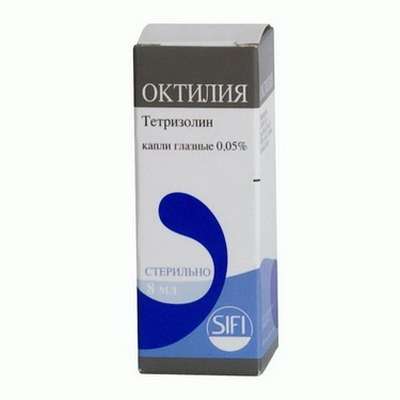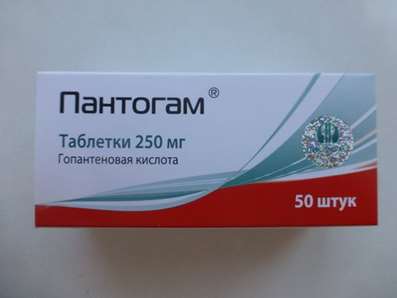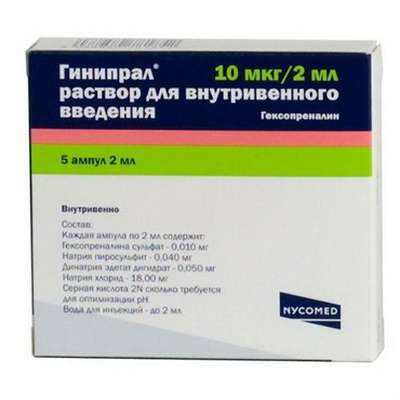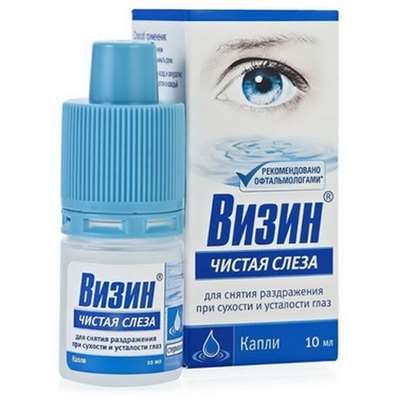Instruction for use: Zoloft
I want this, give me price
Dosage form: coated tablets
Active substance: Sertaline*
ATX
N06AB06 Sertalin
Pharmacological groups:
Antidepressant
The nosological classification (ICD-10)
F32 Depressive episode: Adynamic subdepression; Astheno-adynamic subdepressive states; Asthenoadressive disorder; Astheno-depressive disorder; Asthenodepressive state; Astheno-depressive state; Major Depressive Disorder; Vyaloapatichesky depression with retardation; Double Depression; Depressive pseudodement; Depressive illness; Depressive mood disorder; Depressive disorder; Depressive mood disorder; Depressive state; Depressive disorders; Depressive syndrome; Depressive syndrome larviated; Depressive syndrome in psychoses; Depressed masks; Depression; Depression Depletion; Depression with the phenomena of inhibition within the framework of cyclothymia; Depression is smiling; Involutional depression; Involutionary melancholy; Involutional depression; Manic-depressive disorder; Masked Depression; Melancholic Attack; Neurotic depression; Neurotic depression; Shallow Depression; Organic depression; Organic depressive syndrome; Simple depression; Simple melancholic syndrome; Psychogenic depression; Reactive depression; Reactive depression with moderate psychopathological symptoms; Reactive depressive states; Reactive depression; Recurrent depression; Seasonal depressive syndrome; Severostatic depression; Senile Depression; Symptomatic Depression; Somatogenic depression; Cyclotymic depression; Exogenous depression; Endogenous depression; Endogenous Depressive Conditions; Endogenous Depression; Endogenous depressive syndrome
F33 Recurrent depressive disorder: Major depressive disorder; Secondary depression; Double Depression; Depressive pseudodement; Depressive mood disorder; Depressive disorder; Depressive mood disorder; Depressive state; Depressive syndrome; Depressed masks; Depression; Depression is smiling; Involutional depression; Involutional depression; Masked Depression; Melancholic Attack; Reactive depression; Reactive depression with moderate psychopathological symptoms; Reactive depressive states; Exogenous depression; Endogenous depression; Endogenous Depressive Conditions; Endogenous Depression; Endogenous depressive syndrome
F40.1 Social phobia: Social isolation; Social detachment; Social phobia; Social Anxiety Disorder / Social Phobia; Sociophobia; Sociopathy
F41.0 Panic disorder [episodic paroxysmal anxiety]: Panic state; Panic attack; Panic; Panic disorders
F42.9 Obsessive-compulsive disorder, unspecified: Compulsive personality; Compulsions and compulsive actions; Obsession; Obsessive Compulsive Disorders; Compulsion Neurosis; Obsessive-compulsive depression; Obsessive-compulsive state; Obsessive neurosis; Obsessive-compulsive personality
F43.1 Post-traumatic stress disorder: Combat fatigue; Catastrophe Syndrome; The survivor's syndrome; Traumatic isolation; Traumatic neurosis; Traumatic syndrome; Post-Traumatic Stress Disorder
Composition
Tablets, coated with a coating.
active substance:
sertraline (as hydrochloride) 50 mg; 100 mg
auxiliary substances: calcium phosphate; ICC; hydroxypropyl cellulose; sodium starch glycolate; magnesium stearate; hydroxypropylmethylcellulose; polyethylene glycol; polysorbates; titanium dioxide (E171)
Description of dosage form
Tablets: white, oblong. On the surface of the tablet, "Pfizer" is squeezed from one side, on the other hand, for a dosage of 50 mg - "ZLT-50" (with a risk), for dosage of 100 mg - "ZLT-100".
Pharmachologic effect
Pharmacological action - antidepressant.
Pharmacodynamics
Sertraline is an antidepressant, a potent specific inhibitor of serotonin reuptake (5-HT) in neurons. It has very little effect on the re-uptake of norepinephrine and dopamine. In therapeutic doses, sertraline blocks the seizure of serotonin in human platelets. It does not have a stimulating, sedative or anticholinergic effect. Due to selective inhibition of 5-HT capture, sertraline does not increase adrenergic activity. Sertraline does not have an affinity for muscarinic (cholinergic), serotonergic, dopaminergic, adrenergic, histaminergic, GABA or benzodiazepine receptors.
Sertraline does not cause drug dependence, and an increase in body weight with prolonged admission.
Pharmacokinetics
Absorption is high (but at a slow rate). Bioavailability increases during meals by 25%. Food increases Cmax by 25% and shortens Tmax. At the person at treatment sertralinom in a dose from 50 to 200 mg 1 time day for 14 days Tmax in plasma - 4,5-8,4 ch after reception. Cmax and AUC are proportional in the dose range of 50-200 mg sertraline once a day for 14 days, with a linear character of the pharmacokinetic dependence. The pharmacokinetic profile in adolescents and the elderly does not differ from those in patients aged 18 to 65 years. The average T1 / 2 sertraline in young and elderly men and women is 22-36 hours. Approximately twice the cumulation of the drug before the onset of CSS after 1 week of treatment (dose intake - once a day) is equivalent to the final T1 / 2. Binding to plasma proteins is approximately 98%. It has been shown that the pharmacokinetics of sertraline in children with obsessive-compulsive disorder (OCD, see below) is similar to that in adults (although in children the metabolism of sertraline is somewhat more active). However, given the lower body weight in children (especially at the age of 6-12 years), the drug is recommended to use in a smaller dose to avoid excessive levels of it in the plasma.
Sertraline undergoes active biotransformation when it first passes through the liver. The main metabolite found in plasma, N-desmethylsertralin, is significantly inferior (about 20 times) to sertraline by in vitro activity and is in fact not active on in vivo depression models. T1 / 2 N-desmethylsertraline varies within the range of 62-104 h. Sertraline and N-desmethylsertralin are actively biotransformed; the resulting metabolites are excreted in equal amounts with feces and urine. Unchanged sertraline is excreted in the urine in an insignificant amount (<0.2%). In patients with cirrhosis of the liver, T1 / 2 and AUC increase in comparison with those in healthy people.
Indications for the Zoloft
depression of different etiology (treatment and prevention);
obsessive-compulsive disorder;
panic disorder;
post-traumatic stress disorder (PTSD);
social phobia.
Contraindications
known hypersensitivity to sertraline;
simultaneous use of MAO inhibitors and pimozide;
pregnancy;
the period of breastfeeding (see "Application during pregnancy and lactation");
children's age till 6 years.
With caution: organic diseases of the brain (including delayed mental development); epilepsy; hepatic and / or renal insufficiency; marked reduction in body weight.
Application in pregnancy and lactation
There are no controlled results of the use of sertraline in pregnant women, so it is necessary to prescribe them only if the expected benefit for the mother exceeds the potential risk for the fetus. Women of reproductive age who are expected to be prescribed sertraline should be recommended to use effective contraceptives.
Sertraline is found in breast milk, and therefore treatment with this drug during breastfeeding is not recommended. In this case there are no reliable data on the safety of its application. If treatment is still necessary, then breast-feeding should be stopped. In the case of sertraline during pregnancy and lactation, some newborns whose mothers were taking antidepressants from the SSRI group, including serotonin, may have symptoms similar to the response to drug withdrawal.
Side effects
On the part of the digestive system: dyspeptic disorders (flatulence, nausea, vomiting, diarrhea, constipation), abdominal pain, pancreatitis, dry mouth.
On the part of the CVS: heart palpitations, tachycardia, arterial hypertension.
From the musculoskeletal system: arthralgia, muscle cramps.
From the central nervous system and peripheral nervous system: extrapyramidal disorders (dyskinesias, akathisia, gnashing of teeth, gait disturbance), involuntary muscular contractions, paresthesia, fainting, drowsiness, headache, migraine, dizziness, tremor, insomnia, anxiety, agitation, hypomania, mania , hallucinations, euphoria, nightmares, psychosis, decreased libido, suicide, coma.
On the part of the respiratory system: bronchospasm, yawning.
From the urinary system: enuresis, urinary incontinence or retention.
On the part of the reproductive system and breast: violation of sexual function (delay ejaculation, decreased potency), galactorrhea, gynecomastia, menstrual irregularity, priapism.
On the part of the organs of vision: visual impairment, mydriasis.
On the part of the endocrine system: giperprolaktinemiya, hypothyroidism, syndrome of inadequate secretion of ADH.
From the hepatobiliary system: hepatitis, jaundice, liver failure.
Allergic reactions: urticaria, pruritus, anaphylactoid reaction.
Other: weakness, redness of the skin or flushing of the face, ringing in the ears, alopecia, angioedema, facial edema, periorbital edema, photosensitivity reaction, purpura, increased sweating, decreased appetite (rarely increased), down to anorexia, decreased or increased body weight, bleeding (including nasal, gastrointestinal or hematuria), peripheral edema, occasionally Stevens-Johnson syndrome and epidermal necrolysis.
Laboratory test data: rarely, with prolonged use, there is an asymptomatic increase in the activity of transaminases in the blood serum. The abolition of the drug in this case leads to a normalization of the activity of the enzymes.
Possible development of leukopenia and thrombocytopenia, as well as increased serum cholesterol levels.
When treatment with sertraline is discontinued, rare cases of withdrawal syndrome are described. There may be paresthesia, hypoesthesia, symptoms of depression, hallucinations, aggressive reactions, psychomotor agitation, anxiety or symptoms of psychosis that can not be distinguished from the symptoms of the underlying disease.
Interaction
Pimozide. With the combined use of sertraline and pimozide, there was an increase in the levels of pimozide when administered once in a low dose (2 mg). The increase in pimozide levels was not associated with any changes in the ECG. Since the mechanism of this interaction is unknown, and pimozide has a narrow therapeutic index, simultaneous administration of pimozide and sertraline is contraindicated.
MAO inhibitors. There are serious complications with concomitant use of sertraline and MAO inhibitors (including selective - selegiline and reversible type of action - moclobemide, and linezolid). It is possible to develop a serotonin syndrome (SS) (hyperthermia, rigidity, myoclonus, lability in the autonomic nervous system (rapid fluctuations in breathing parameters and CCC) changes in mental status, including increased irritability, marked exaltation, confusion, which in some cases may go into a delirious state or to whom). Similar complications, sometimes fatal, occur with the appointment of MAO inhibitors against the background of treatment with antidepressants that inhibit neuronal capture of monoamines, or immediately after their withdrawal.
LC, depressing the central nervous system, and ethanol. The combined use of sertraline and substances depressing the central nervous system requires close attention; The use of alcoholic beverages and preparations containing alcohol during the treatment with sertraline is also prohibited. Potentiation of the effect of ethanol, carbamazepine, haloperidol or phenytoin on cognitive and psychomotor function in healthy people has not been noted; however, the joint use of sertraline and alcohol is not recommended.
Anticoagulants of indirect action (warfarin). When they are co-administered with sertraline, there is an insignificant but statistically significant increase in MI (in these cases it is recommended to monitor PI at the beginning of treatment with sertraline and after its withdrawal).
Pharmacokinetic interaction
Sertraline binds to blood plasma proteins. Therefore, it is necessary to consider the possibility of its interaction with other drugs that bind to proteins (for example, diazepam and tolbutamide).
Cimetidine. Simultaneous use significantly reduces the clearance of sertraline.
LS, metabolized by the isoenzyme 2D6 cytochrome P450. Long-term treatment with sertraline at a dose of 50 mg / day increases the concentration in the plasma of concomitantly used drugs, in the metabolism of which this enzyme participates (tricyclic antidepressants, antiarrhythmic drugs of class I - propafenone, flecainide).
LS, metabolized by other enzymatic systems of cytochrome P450. Experiments on in vitro interaction showed that the isoenzyme CYP3A3 / 4 beta-hydroxylation of endogenous cortisol, as well as the metabolism of carbamazepine and terfenadine, do not change with the long-term administration of sertraline at a dose of 200 mg / day. Concentration in plasma tolbutamide (but with simultaneous administration reduces the clearance of tolbutamide - it is necessary to control glucose in the blood with simultaneous application), phenytoin and warfarin for long-term administration of sertraline in the same dose also does not change. Thus, it can be concluded that sertraline does not inhibit the isoenzyme CYP2S9.
Sertraline does not affect the concentration of diazepam in the serum, indicating that there is no inhibition of isoenzyme CYP2S19. According to in vitro studies, sertraline has virtually no effect or minimally inhibits the isoenzyme CYP1A2.
Lithium. The pharmacokinetics of lithium does not change with the concomitant administration of sertraline. However, tremor is observed more often when they are used together. As well as the appointment of other SSRIs, the joint use of sertraline with drugs that affect serotonergic transmission (eg with lithium) requires increased caution.
Drugs affecting serotonergic transmission. When replacing one inhibitor of neuronal seizure of serotonin with another, there is no need for a period of washing. However, care must be taken when changing the course of treatment. Tryptophan or fenfluramine should be avoided together with sertraline.
Induction of microsomal liver enzymes. Sertraline causes minimal induction of liver enzymes. Simultaneous administration of sertraline in a dose of 200 mg and antipyrine results in a small (5%), but significant decrease in T1 / 2 antipyrine.
Atenolol. With the co-administration of sertraline does not change its beta-adrenergic blocking effect.
Glibenclamide and digoxin. When sertraline was administered in a daily dose of 200 mg, no drug interaction with these drugs was detected.
Phenytoin. Long-term use of sertraline at a dose of 200 mg / day does not have a clinically significant effect and does not inhibit the metabolism of phenytoin. Despite this, careful monitoring of the level of phenytoin in the blood plasma is recommended from the time of sertraline administration with appropriate adjustment of the doses of phenytoin.
Sumatriptan. There are extremely rare cases of weakness, increased tendon reflexes, confusion, anxiety and arousal in patients taking sertraline and sumatriptan simultaneously. It is recommended to monitor patients who have the appropriate clinical grounds for simultaneous administration of sertraline and sumatriptan.
Dosing and Administration
Inside, 1 time per day, morning or evening, regardless of food intake.
Initial dose
Depression and OCD. Treatment with sertraline should begin with a dose of 50 mg / day.
Panic disorders, PTSD and social phobia. Treatment begins with a dose of 25 mg / day, which is increased after 1 week to 50 mg / day. The use of the drug in this scheme allows you to reduce the frequency of early undesirable effects of treatment, characteristic of panic disorder.
Dose selection
Depression, OCD, panic disorder, PTSD and social phobia. With an insufficient effect of sertraline in patients at a dose of 50 mg / day, its daily dose can be increased. The dose should be increased at intervals not more than once a week, up to the maximum recommended dose of 200 mg / day.
The initial therapeutic effect may appear within 7 days, but the overall effect is usually achieved in 2-4 weeks (or even for a longer time with OCD).
Supportive therapy
The maintenance dose for long-term treatment should be minimal effective - with appropriate changes in it, depending on the therapeutic effect.
Treatment for children
Safety and efficacy of sertraline have been established in children with OCD (aged 6 to 17 years). In adolescents (aged 13-17 years) suffering from OCD, treatment with sertraline should begin with a dose of 50 mg / day. In children (aged 6-12 years), OCD therapy starts at a dose of 25 mg / day, after 1 week it is increased to 50 mg / day. In the following, if the effect is insufficient, the dose can be increased stepwise, 50 mg / day, up to 200 mg / day, as needed. In clinical trials in patients with depression and OCD aged 6 to 17 years, it was shown that the pharmacokinetic profile of sertraline is similar to that of adults. However, in order to avoid an overdose, with a dose increase of more than 50 mg, it is necessary to take into account the smaller body weight in children compared to adults.
Selection of dose in children and adolescents. T1 / 2 sertraline is approximately 1 day, so the dose change should occur at intervals of not less than 1 week.
Special patient groups
Aged people. In the elderly, the drug is used in the same dose range as in younger people.
Violation of the function of the liver. Sertraline should be used with caution in patients with liver disease. In patients with hepatic insufficiency, lower doses should be used or the interval between doses should be increased (see "Special instructions").
Impaired renal function. Sertraline is largely metabolized in the body. In an unchanged form, only a small amount of the drug is excreted in the urine. As expected, taking into account the insignificant renal excretion of sertraline, correction of its dose, depending on the severity of renal failure, is not required (see "Special instructions").
Overdose
Symptoms: severe symptoms with sertraline overdose are not detected even with the administration of the drug in large doses. However, with simultaneous administration with other drugs or alcohol, severe poisoning can occur, up to coma and death.
Overdose can cause SS with nausea, vomiting, drowsiness, tachycardia, agitation, dizziness, psychomotor agitation, diarrhea, increased sweating, myoclonus and hyperreflexia.
Treatment: a specific antidote of the drug does not exist. It requires intensive maintenance therapy and constant monitoring of vital body functions. It is not recommended to induce vomiting. The purpose of activated carbon can be more effective than gastric lavage. It is necessary to maintain airway patency. In sertraline, a large Vd, in this regard, increased diuresis, dialysis, hemoperfusion or blood transfusion may not be successful.
Special instructions
Sertraline should not be administered together with MAO inhibitors, and also within 14 days after discontinuation of treatment with MAO inhibitors. Similarly, after the withdrawal of sertraline within 14 days, MAO inhibitors are not prescribed.
SS and malignant neuroleptic syndrome (CNS). When SSRIs are used, cases of development of MDS and ZNS are described, the risk of which increases when SSRIs are combined with other serotonergic drugs (including triptans), as well as drugs that affect serotonin metabolism (including MAO inhibitors), antipsychotic drugs and other antagonists of dopamine receptors. Manifestations of the SS can be changes in mental status (in particular agitation, hallucinations, coma), autonomic lability (tachycardia, fluctuations in blood pressure, hyperthermia), changes in neuromuscular transmission (hyperreflexia, impaired coordination of movements) and / or gastrointestinal disturbances (nausea, vomiting and diarrhea). Some manifestations of the SS, incl. hyperthermia, rigidity of muscles, vegetative lability with the possibility of rapid fluctuations in the parameters of vital functions, as well as changes in mental status, can resemble the symptoms developing in the NSA. It is necessary to monitor patients for the development of clinical manifestations of SS and ZNS.
Other serotonergic drugs. Care should be taken when concurrently administering sertraline with other drugs that enhance serotonergic neurotransmission, such as tryptophan, fenfluramine, or 5-HT agonists. Such a joint appointment should, if possible, be ruled out, given the likelihood of pharmacodynamic interaction.
Transition from other SSRIs, antidepressants or anti-obsessive drugs. The experience of clinical studies, the purpose of which was to determine the optimal time required for transferring patients from taking other antidepressant and anti-obsessive agents to sertraline, is limited. Care must be taken in this transition, especially with long-acting drugs, for example fluoxetine. The necessary interval between the cancellation of one SSRI and the start of taking another similar drug is not established.
In patients undergoing electroconvulsive therapy, sufficient experience with sertraline is absent. The possible success or risk of such a combined treatment has not been studied.
There is no experience with sertraline in patients with convulsive syndrome, therefore, its use in patients with unstable epilepsy should be avoided, and patients with controlled epilepsy should be carefully observed during treatment. When the seizures appear, the drug should be discontinued.
Patients suffering from depression are at risk for suicide attempts. This danger persists until the development of remission. Therefore, from the beginning of treatment and until the optimal clinical effect is achieved, patients should be provided with permanent medical supervision.
Activation of mania / hypomania. During clinical trials before the introduction of sertraline on the market, hypomania and mania were observed in approximately 0.4% of patients receiving sertraline. The cases of activation of mania / hypomania are also described in a small part of patients with manic-depressive psychosis receiving other antidepressant or anti-obsessional drugs.
Application in the failure of liver function. Sertralin is actively biotransformed in the liver. According to the pharmacokinetic study, with multiple sertraline administration in patients with stable cirrhosis of the lung of the lung, there was an increase in T1 / 2 of the drug and an almost triple increase in AUC and Cmax of the drug compared to those in healthy individuals. There were no significant differences in binding to plasma proteins in the two groups. Use sertralin in patients with liver disease with caution. When prescribing a drug to a patient with impaired liver function, it is necessary to discuss the advisability of reducing the dose or increasing the interval between taking the drug.
Application in renal failure. Sertraline undergoes active biotransformation, so in unchanged form with urine it is excreted in a small amount. In patients with mild and moderate renal insufficiency (Cl creatinine 30-60 ml / min) and patients with moderate or severe renal failure (Cl creatinine 10-29 ml / min) pharmacokinetic parameters (AUC0-24 and Cmax) of sertraline at multiple his reception did not differ significantly from the control group. In all the T1 / 2 groups of the drug was the same, as well as there was no difference in binding to plasma proteins. The results of this study indicate that, as expected, taking into account the minor renal excretion of sertraline, correction of its dose, depending on the severity of renal failure, is not required.
Pathological bleeding / hemorrhage. It is advisable to use caution when prescribing SSRIs in combination with drugs with established ability to change the functions of platelets, as well as in patients with hemorrhagic diseases in the anamnesis.
Hyponatremia. During treatment with sertraline, transient hyponatremia may occur. It often develops in elderly patients, as well as when taking diuretics or a number of other drugs. Such a side effect is associated with the syndrome of inappropriate ADH secretion. With the development of symptomatic hyponatremia, sertraline should be abolished and an adequate therapy aimed at correcting the sodium level in the blood should be prescribed. Signs and symptoms of hyponatremia include headache, impaired concentration, memory impairment, weakness and instability, which can lead to falls. In more severe cases, hallucinations, fainting, convulsions, coma, respiratory arrest and death may occur.
Influence on the ability to drive vehicles and work with machinery. The appointment of sertraline, as a rule, is not accompanied by a violation of psychomotor functions. However, its use simultaneously with other drugs can lead to disruption of attention and coordination of movements. Therefore, during the treatment with sertraline, it is not recommended to operate vehicles, special equipment or engage in activities involving an increased risk.
Release form
The tablets covered with a cover, 50 mg, 100 mg. In blisters made of opaque polypropylene and aluminum foil, 14 pcs. 1 or 2 blisters in a cardboard bundle.
Conditions of leave from pharmacies
On prescription.
Storage conditions for Zoloft
At a temperature not exceeding 30 ° C.
Keep out of the reach of children.
Shelf life of Zoloft
5 years.
Do not use after the expiry date printed on the package.

 Cart
Cart





